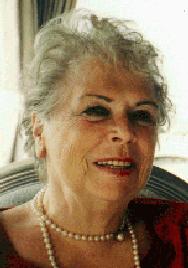Biodynamic Psychotherapy
Biodynamic Body Psychotherapy derives from the world of body psychotherapy, which in turn is part of the humanist psychotherapy stream. This psychotherapy method relates to all the layers within us: the physical, energetic, breathing, emotional, mental, psychological and spiritual, and to the whole entity.
Biodynamic body psychotherapy was developed by Gerda Boyesen, a Norwegian psychologist and physiotherapist (twenty years ago, I studied for five years with her and the teaching team at the Boyesen Centre). It is a biological theory of advanced psychology which focuses on the organic connections between body and mind; the idea is that psychological principles are not just theories and ideas but authentic energetic power/force, and neurological reality.
The concept biodynamic (bio = life, dynamic = force/power) relates to the idea that the life force flows naturally and spontaneously. Life energy is the power that drives us and brings us to life at all levels - physical, mental, emotional, and spiritual.
Biodynamic psychotherapy believes in the healing power of life, human contact and humanity - in both therapy and life - as a basis for healing and growth.
Wilhelm Reich, the father of body psychotherapy, said that: ‘repressed emotions become muscular tensions in the body’ and he created the foundation for the development and study of the field in the world and in Israel. It would become an important stream in the world of psychotherapy.
Gerda Boyesen, who followed in his footsteps, remarked that: ‘In our arteries, veins and capillaries, in our blood system there is energy/life force, breath, emotions and sexuality’. She based Biodynamic Body Psychotherapy on the principle that the life force or bioenergy, which flows through as waves of pleasure, awakens our senses and lets us live happy and satisfying lives.
One of the method’s principles concerns the relationship with the Primary Personality - our inner essence, the qualities, potential, and love within us. The way to that relationship passes through a process of learning and therapy, in which we observe our defences, patterns of behaviour and thought, and our ‘armour mass’. Basically, that ‘armour’ is all those bodily and respiratory places, which by repressing various emotions and traumas, have grown more rigid and seem to be armoured. By doing so, the life force, the energy that flows within us, has stopped flowing in a healthy dynamic way. In many cases, this can create a lack of energy, and depression.
In this approach, dissolving the armour can be effected using techniques of touch, conversation with the body, awareness work, and also other therapeutic tools which are appropriate for the patient and the resulting therapeutic relationship: energetic, respiratory, and voice work, psychodrama and creative efforts.
Biodynamic theory maintains that neurosis is a physiological development, no less than a mental development. That is, the individual embodies or fulfils his neuroses within his body. Every emotion, feeling, and frustration have a physiological and mental impact on people. When certain emotions are not expressed repeatedly, and conflicts are not resolved, those unexpressed emotions have implications for the body and can eventually become chronic.
The tension builds itself, layer on layer, until neurotic symptoms develop; in certain cases they are chiefly physical ones. in other cases - behavioural. These processes happen chiefly in the early years of life, when physical, mental and emotional development are taking place in the child. In a healthy childhood, with confidence and trust, children have the capacity and skills to digest emotional experiences, even powerful ones. When a person loses the ability ‘to heal himself’ or there is an untreated trauma - neurosis will develop. Biodynamic therapy seeks the way to build the natural healing ability and to reach the individual’s living core - the primary personality.
Another important principle views the gut and the stomach as the emotional brain (shown in many research studies), and the understanding that the digestive system performs both physical and emotional digestion. That digestive process is called ‘psychoplastics’ and in that process, the body evacuates residue that result from the effects of an emotional process. When people live in an atmosphere of stress and conflict, the psychoplastics process is repressed, and as a result the gut muscles lose their ability to function. It is a process which Gerda Boysen called ‘cellular armour’ remnants, in which stress is not discharged.
In biodynamic therapy, we aim to give back to the emotional brain its ability for emotional digestion. It is a process of thorough biological distillation, in which the body is cleaned of neuroses, and the organism’s centre of life is released from contraction. The primary personality, which is not neurotic, is revealed and becomes able to express itself.
To schedule an appointment
Send a message and I will get back to you soon




